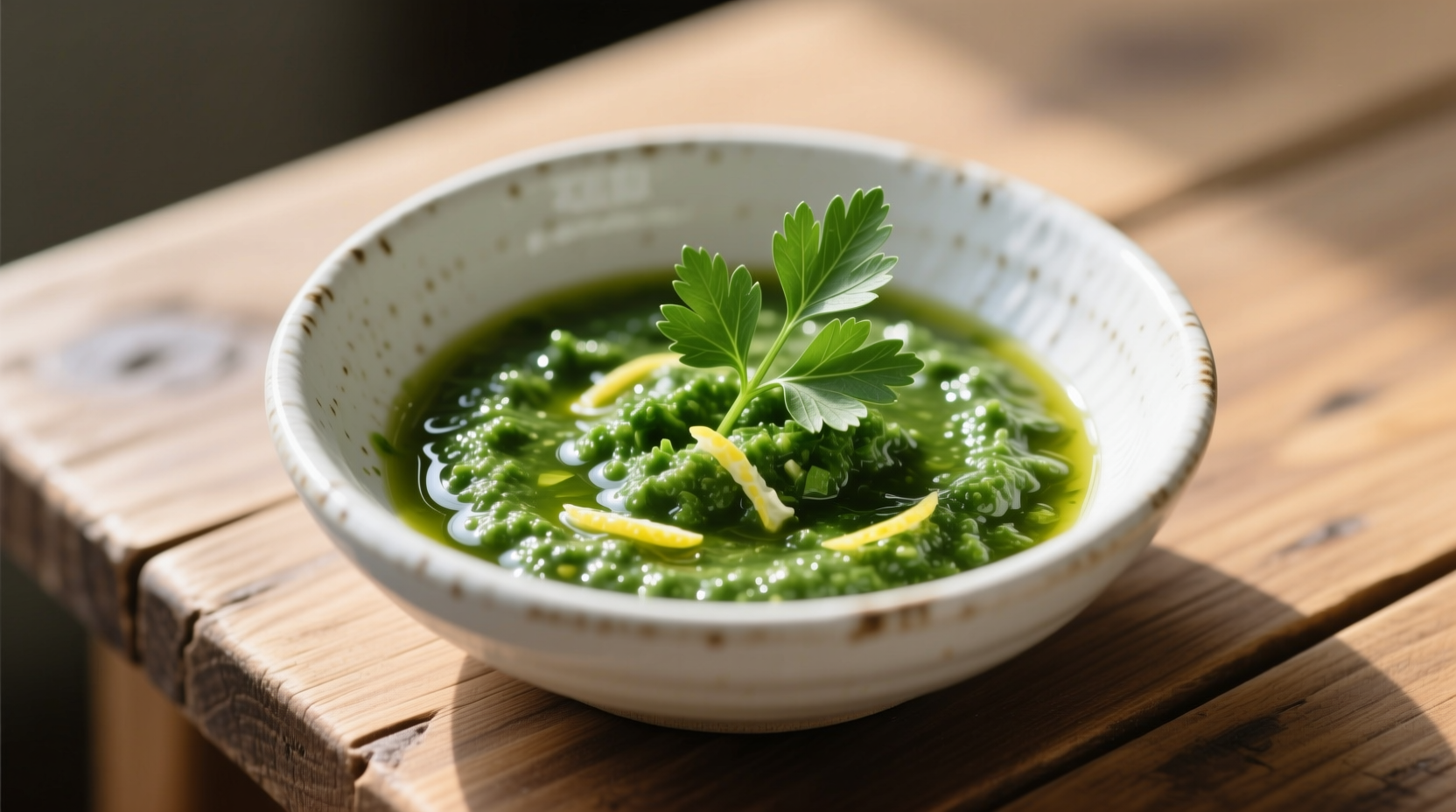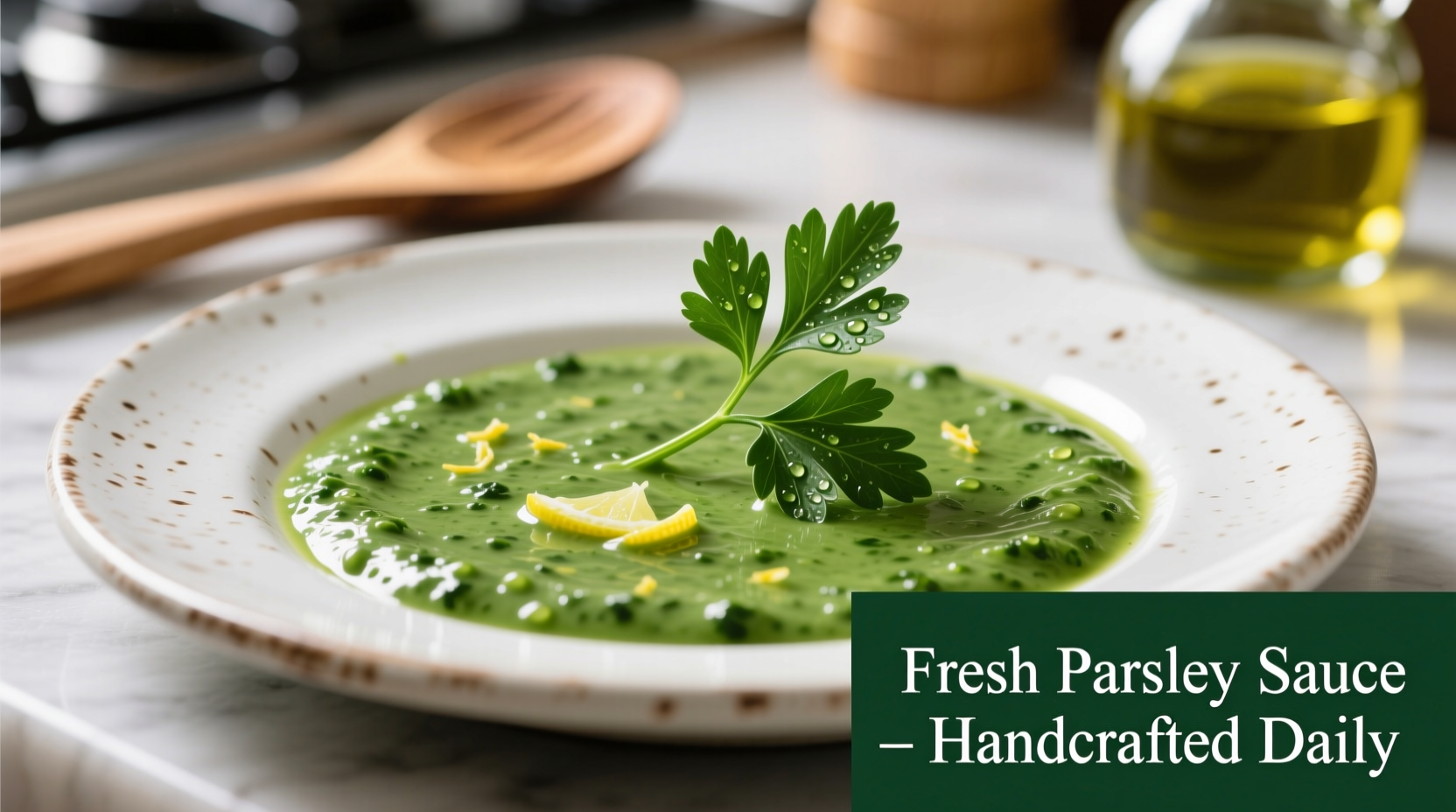Parsley sauce is a versatile herb-based condiment originating from European cuisine, most commonly made with fresh flat-leaf parsley, garlic, lemon juice, olive oil, and seasonings. The classic preparation combines finely chopped parsley with complementary ingredients to create a bright, flavorful sauce perfect for fish, chicken, vegetables, and more. This simple yet sophisticated sauce enhances dishes without overpowering their natural flavors.
The Evolution of Parsley Sauce Through Culinary History
Parsley sauce has evolved significantly across centuries, adapting to regional tastes while maintaining its essential character. Historical records from the Encyclopedia Britannica show parsley's culinary use dates back to ancient Rome, where it was initially valued more for medicinal properties than cooking. By the Middle Ages, European cooks began incorporating parsley into vinegar-based sauces that would eventually evolve into today's preparations.
The 17th century marked a turning point when French chefs started developing formal herb sauce techniques. According to culinary archives from the Oxford Companion to Food, parsley became a staple in French "fines herbes" blends during this period. The 19th century saw Auguste Escoffier formalize many classic French sauces, including structured approaches to herb-based preparations that influence modern parsley sauce techniques.

Mastering the Classic Parsley Sauce Recipe
Creating exceptional parsley sauce requires attention to ingredient quality and preparation technique. Professional chefs emphasize using flat-leaf (Italian) parsley rather than curly varieties for superior flavor and texture. The ideal ratio balances fresh herbs with complementary elements that enhance rather than mask parsley's distinctive taste.
| Essential Component | Professional Recommendation | Common Mistake to Avoid |
|---|---|---|
| Parsley Selection | Use fresh, vibrant flat-leaf parsley (1 cup packed) | Using wilted or yellowing parsley |
| Garlic Ratio | 1 small clove per cup of parsley (minced fine) | Overpowering with too much garlic |
| Acid Component | Fresh lemon juice (2-3 tbsp) | Using bottled lemon juice |
| Fat Base | High-quality extra virgin olive oil (1/4 cup) | Using low-quality or rancid oil |
| Seasoning | Sea salt and freshly ground pepper to taste | Underseasoning the sauce |
Global Variations and Their Perfect Pairings
While the French classic remains popular, regional adaptations offer exciting flavor profiles suited to different dishes. Understanding these variations helps match the right sauce to your meal. Culinary anthropologists note how parsley sauce traveled along trade routes, adapting to local ingredients and preferences.
The Mediterranean variation incorporates mint and sumac, creating a brighter profile ideal for grilled lamb and roasted vegetables. Argentinean chimichurri, often mistaken for parsley sauce, features vinegar and red pepper flakes that cut through rich meats. Italian salsa verde adds capers and anchovies for a more complex umami flavor that complements boiled meats and fish.
Practical Application: When and How to Use Parsley Sauce
Professional chefs emphasize context when selecting and applying parsley sauce. Lighter variations with lemon and minimal garlic work best with delicate fish like sole or cod, while heartier versions with vinegar and chili complement robust meats like steak or lamb. The sauce's acidity makes it particularly effective with fatty foods, cutting through richness while enhancing natural flavors.
Temperature matters significantly - always add parsley sauce just before serving to preserve its fresh flavor and vibrant color. Heating parsley sauce destroys its delicate flavor compounds and causes discoloration. For cold applications, consider making a slightly thicker version that holds its structure better.
Avoiding Common Preparation Mistakes
Even experienced cooks make critical errors with parsley sauce. The most frequent issue involves improper herb preparation - failing to dry parsley thoroughly after washing introduces excess water that dilutes flavor and creates a watery texture. Another common mistake is using pre-minced garlic from jars, which contains preservatives that alter the sauce's flavor profile.
Timing is crucial: prepare parsley sauce no more than 30 minutes before serving for optimal freshness. The chemical compounds in cut parsley begin breaking down immediately, diminishing both flavor and nutritional value. If you must prepare in advance, keep components separate and combine just before use.
Storage Guidelines for Maximum Freshness
True parsley sauce enthusiasts know it's best enjoyed immediately, but practical considerations sometimes require storage. When properly stored in an airtight container with plastic wrap pressed directly against the surface, classic parsley sauce maintains quality for 24-48 hours in the refrigerator. The acid in lemon juice helps preserve color, but some darkening is inevitable.
Freezing significantly alters texture and is generally not recommended. Food science research from the USDA National Agricultural Library confirms that freezing disrupts the cellular structure of fresh herbs, resulting in a mushy consistency upon thawing. For longer storage, consider preserving the components separately rather than the finished sauce.
Professional Tips for Sauce Excellence
Master chefs employ several techniques to elevate basic parsley sauce. Gently pounding garlic with a pinch of salt before adding other ingredients creates a smoother integration of flavors. Using a mortar and pestle for initial mixing produces a more cohesive texture than chopping alone. Some professionals add a small amount of parsley stems, which contain concentrated flavor compounds, after removing tough woody parts.
For special occasions, consider infusing the olive oil with lemon zest before making the sauce. This subtle enhancement deepens the citrus notes without adding acidity. Remember that high-quality ingredients make the difference - seek out vibrant, crisp parsley from farmers markets when possible, as supermarket parsley often lacks optimal freshness.











 浙公网安备
33010002000092号
浙公网安备
33010002000092号 浙B2-20120091-4
浙B2-20120091-4